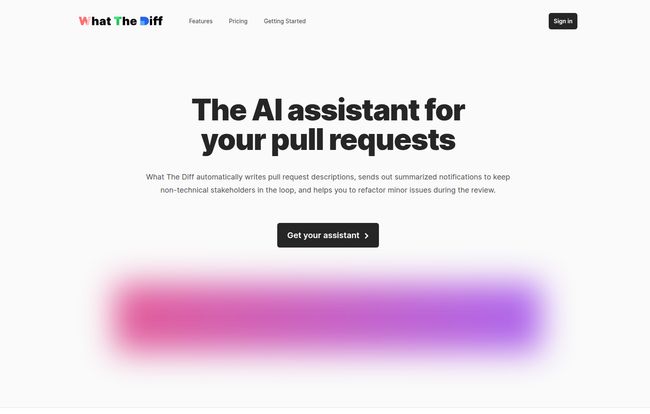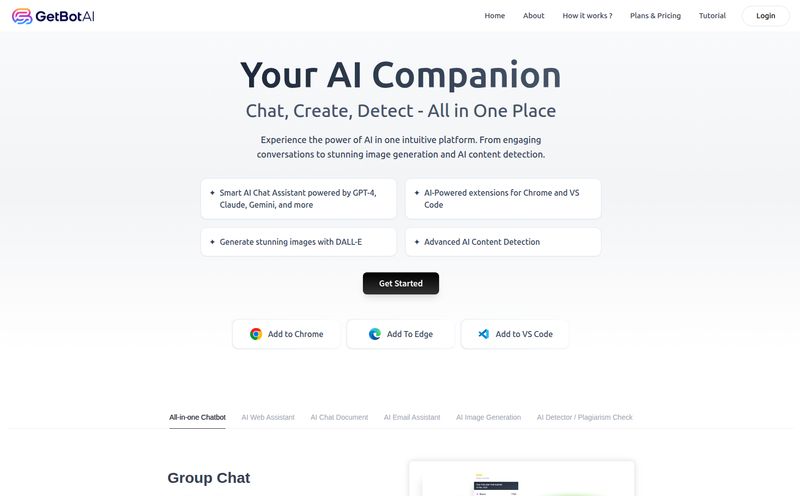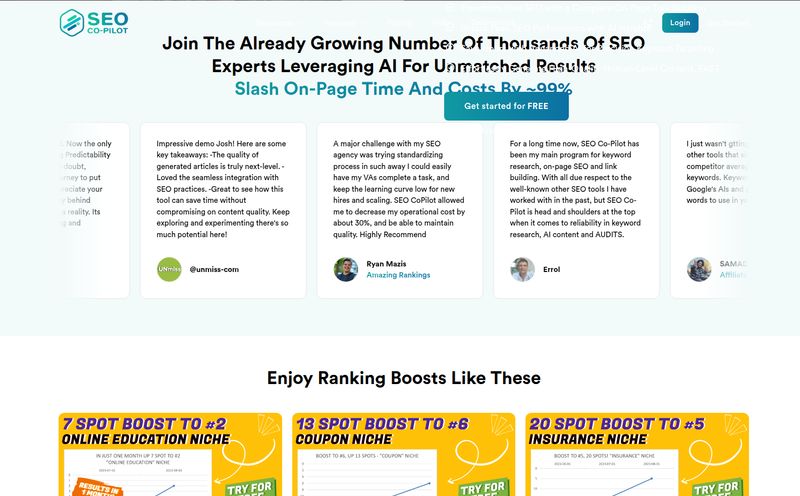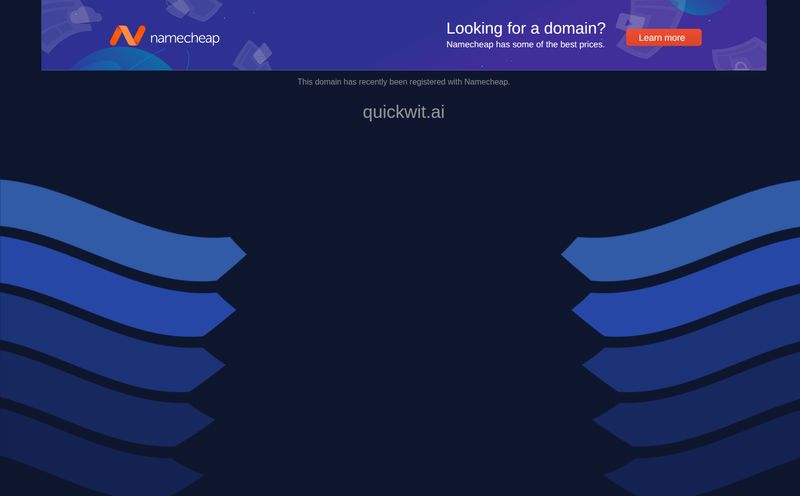If you’re a developer, you’ve been there. It’s 4:45 PM on a Friday. You’re staring at a pull request with 78 file changes and a description that just says “bug fixes.” A single, solitary tear rolls down your cheek. You know you should review it properly, but the siren song of the weekend is calling. So you skim, type out a half-hearted “LGTM,” and merge. We’ve all done it. Don’t lie.
This whole song and dance around pull requests (PRs) is one of the biggest time-sinks in modern software development. It’s a necessary friction, a quality gate that stops us from shipping pure chaos. But man, can it be a drag. Writing a good PR description takes time. Reviewing a big one takes even more time and a huge amount of mental energy.
So, when I stumbled upon a tool called What The Diff, my cynical, battle-hardened developer brain perked up. The pitch? An AI assistant for your pull requests. It promises to automatically write PR summaries, send out notifications, and even help with refactoring. A bold claim. Could this little AI bot be the cure for my end-of-week PR fatigue? I had to find out.
So, What Is This 'What The Diff' Thing Anyway?
At its core, What The Diff is an AI-powered code review assistant that plugs directly into your GitHub or GitLab repositories. Think of it as a super-smart intern who actually enjoys reading through code changes. Its main job is to take the raw “diff”—the lines of code that have been added, removed, or changed—and translate it into something a human can actually understand.
It automatically generates a clear, concise description for your pull request. No more staring at a blank text box trying to remember every little change you made over the last three days. It also creates simplified summaries and changelogs, which is a massive win for keeping non-technical folks, like project managers or product owners, in the loop without having to bother you for a translation.
Basically, it’s designed to cut out the grunt work of the code review process, letting developers focus on the important part: the logic and quality of the code itself.

Visit What The Diff
How It Aims to Soothe the Pull Request Headache
The pain of PRs is twofold: creating them and reviewing them. I’ve seen PRs sit for days, getting stale because nobody wants to tackle the cognitive load of a massive review. What The Diff tries to attack this problem from a few different angles.
Automating the Annoying Bits
First up, the automated PR descriptions. This is a gift to the developer submitting the code. The tool analyzes your changes and writes a summary for you. This isn’t just about saving five or ten minutes. It's about maintaining momentum. Instead of stopping your flow to write a mini-essay about your work, you can push your code, let the bot do its thing, and move on to the next task while your PR is being reviewed. It’s a small change that has a surprisingly big impact on developer productivity.
Making Code Reviews Less of a Slog
For the reviewer, the benefit is even more obvious. Instead of deciphering a cryptic PR title, you get a clean summary of what’s changed and why. The tool also provides rich summary notifications through Slack, email, or webhooks. This means you can get the gist of a PR without even opening GitHub. And here’s a cool feature: inline AI refactoring. As you’re reviewing, the tool can suggest minor fixes and improvements right there in the comments. Instead of typing “could you rename this variable to be more descriptive?” you might just see an AI suggestion to do exactly that. It’s like having a helpful pair-programmer looking over your shoulder.
Speaking a Common Language
Ever tried to explain a backend refactoring project to the marketing team? It’s painful. What The Diff generates beautiful, easy-to-read changelogs and weekly progress reports from your PRs. This is a game-changer for cross-team communication. Your Project Manager can see, in plain English, what the engineering team accomplished this week without having to pester anyone. This builds transparency and saves everyone a meeting, which is a win in my book.
The All-Important Question: What's the Price?
Alright, let’s talk money. Cool tools are only cool if you can afford them. What The Diff uses a token-based pricing model, which I have mixed feelings about, but it’s pretty straightforward. Think of tokens as the currency the AI uses to “think” about your code. A small PR might use a few hundred tokens; a huge one might use a few thousand.
Here’s a quick breakdown of their plans:
| Plan | Price | What You Get |
|---|---|---|
| Free | $0 / month | 25,000 tokens per month (around 10 PRs). Good for solo developers, students, or just trying it out. |
| Pro | $19 / month | Starts at 200,000 tokens (~40 PRs) and goes up. Includes instant refactoring and all notifications (Slack, etc.). Ideal for small to medium-sized teams. |
The free plan is genuinely generous. 25k tokens is enough to get a real feel for the tool on a personal project. The one major catch, which is common with these models, is that unused tokens do not roll over to the next month. So if you have a slow month, you lose them. You have to monitor your usage a bit, especially on the Pro plan, to make sure you’re on the right tier.
The Big Privacy Question: Is It Reading My Secret Code?
Okay, this is the first thing I look for. A tool that needs access to our code repositories? That sets off alarm bells for any security-conscious team. You’re asking it to look at your company’s secret sauce. So, how does What The Diff handle this?
I dug through their FAQ, and their position is pretty clear. They require read-only access to your code to generate the diff, which makes sense—it can't summarize what it can't see. However, they are very explicit that they do not store your code on their servers. More importantly, they state that they do not train their AI models on your code. This is the big one. Your proprietary logic isn't being fed into some global AI brain to benefit your competitors. They use the GitHub/GitLab API to read the diff for a single PR, generate the summary, and then effectively forget it. For most teams, this should be a sufficient and reassuring answer.
My Honest Take After Kicking the Tires
So, is What The Diff worth it? In my opinion, for many teams, the answer is a resounding yes.
The upside is obvious. It saves a quantifiable amount of developer time, which directly translates to money. But the real value is in the qualitative improvements. It reduces friction in the development process, it improves the quality and consistency of code reviews, and it fosters better communication between technical and non-technical teams. It just makes the whole process... smoother.
The downsides are manageable. The token system requires a bit of attention, and the fact that they don’t roll over is a bit of a bummer. And you do have to be comfortable granting a third-party application read-access to your repositories. But given their clear stance on privacy and data handling, this feels like a reasonable trade-off for the value it provides.
Frequently Asked Questions
What programming languages does What The Diff support?
According to their site, it works with nearly all programming languages. The AI is trained to understand code structure and context, so whether you're writing Python, JavaScript, Go, or something more obscure, it should be able to handle it.
What if my team runs out of tokens?
If you burn through your monthly token allowance, the service will stop generating summaries for new PRs until your next billing cycle starts. You can upgrade to a higher token plan at any time if you find you’re consistently running out.
Will this tool train its AI on my company’s code?
No. This is a big one. They state very clearly that they do not use your code to train their models. Your code remains your intellectual property.
Why does it need full access to my code repository?
It doesn’t need full access, just read-only permission. This is necessary for the application to access the diff of a pull request (the changes between branches) to generate its summary. It cannot write to your code or make changes on its own.
Do unused tokens from one month carry over to the next?
Unfortunately, no. Your token allowance resets at the beginning of each billing cycle, and any unused tokens from the previous period are lost. Plan your tier accordingly!
Is AI the Future of Code Reviews?
Look, tools like What The Diff aren't going to replace human developers. A human still needs to look at the code and verify the logic. But that was never the point. The point is to eliminate the tedious, repetitive, and soul-crushing parts of the job.
It’s about augmenting our abilities, not replacing them. By handing off the summary-writing and notification-herding to an AI, we get to spend more of our precious brainpower on what actually matters: building great software. And if a tool can give me back a few hours a week and save me from one more “bug fixes” PR description, then I’m all for it. It might just be the best twenty bucks your team spends this month.



